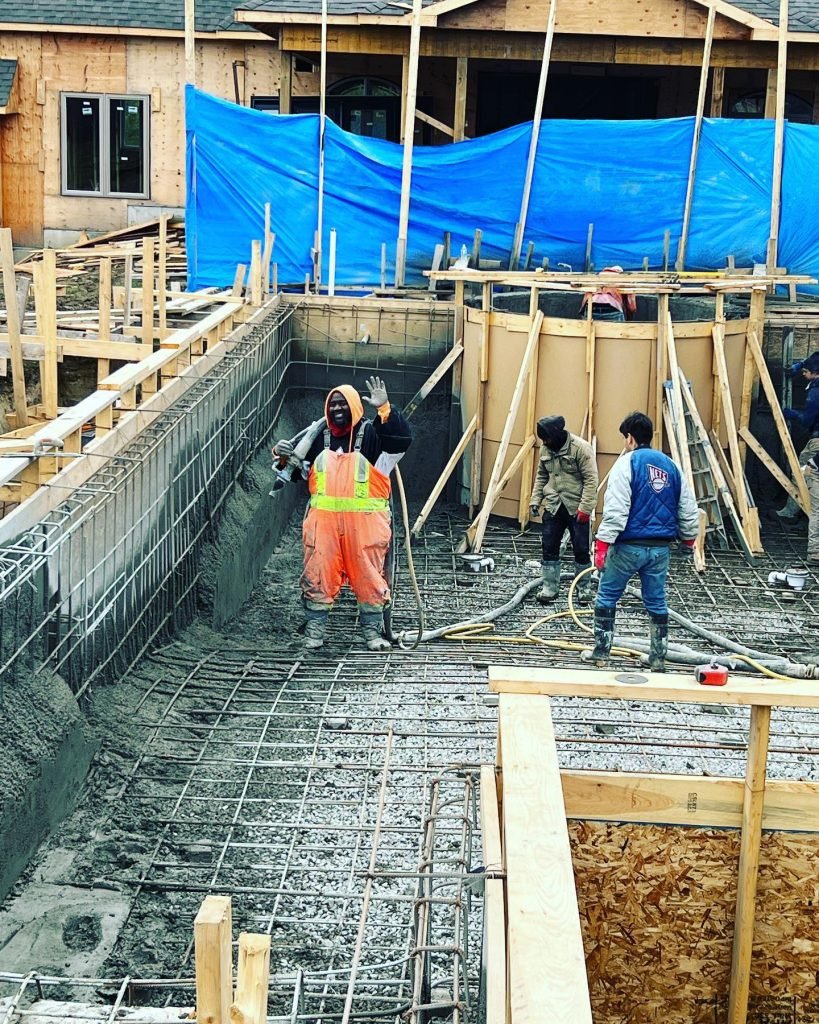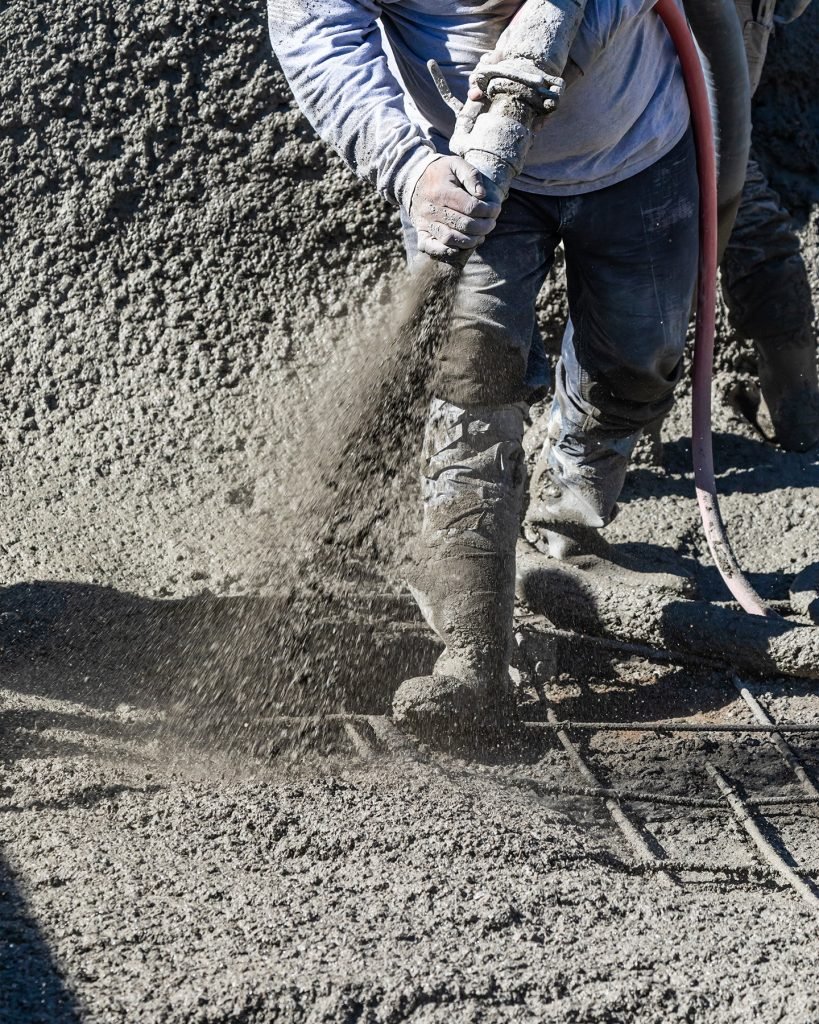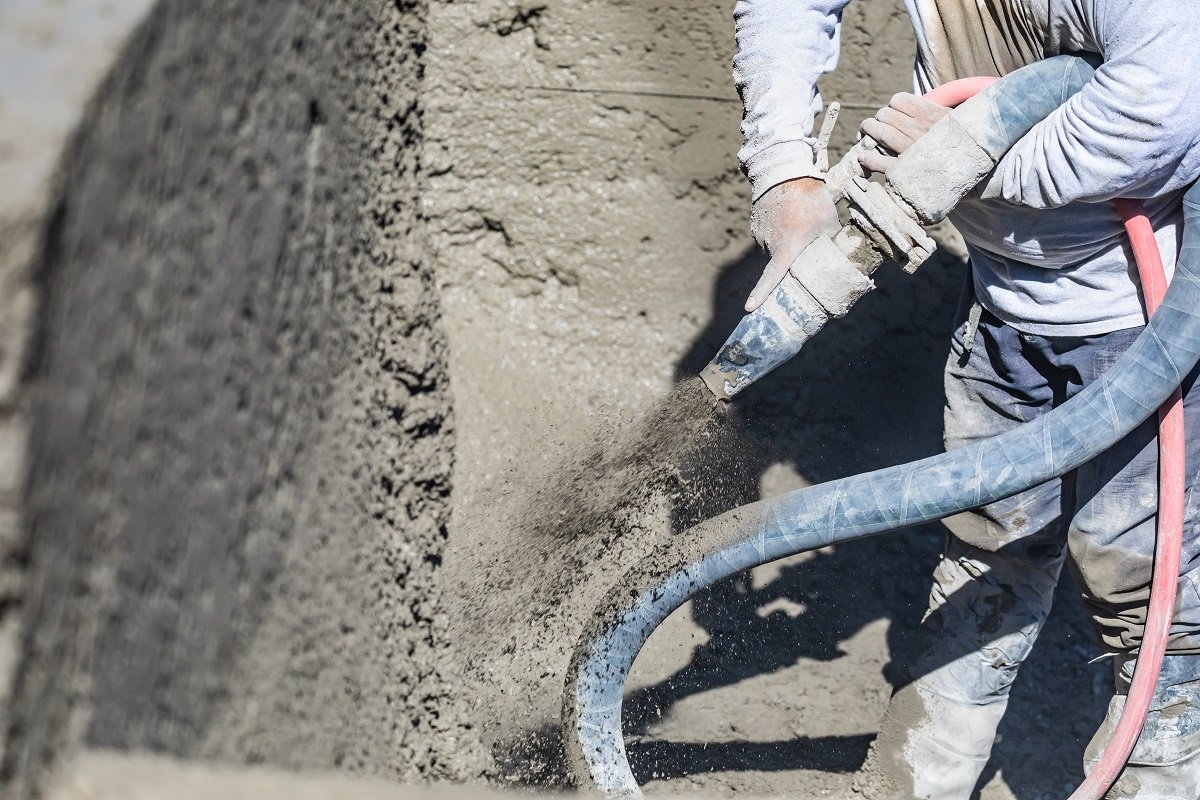Gunite is a form of concrete that has been used for many years in the construction industry. It’s made from cement, sand, an aggregate (typically crushed stone) and water. Gunite can be poured into forms or sprayed onto a surface. The finished product looks like stone.
Components of Gunite
Since Roman times, not much has changed about concrete. Most of the time, water is mixed with cement, sand, and some kind of aggregate, which is small pieces of hard material that are a little bigger than sand, like crushed stone or small pieces of gravel.
There are different kinds of cement, but most of them are made of powdered lime or silicate. China makes most of the world’s cement, which is the most widely used material made by humans and the second most widely used substance in the world, after water.
Cement and water are important parts of our modern world in many ways. Concrete is just a product made of water and cement that is a little more complicated and durable.
Since the 1940s, people have been building pools with concrete gunite. After World War II, when many soldiers moved their families to new suburbs and started looking for more comforts for their homes, they became popular backyard features.
Concrete pools have been around for a long time. For example, most Roman baths were made of concrete.
Gunite just made it easier for local construction companies to build highly customizable pools in suburban backyards. They didn’t have to use as much heavy equipment or spend as much time building forms, which are the shapes or moulds that concrete is poured into until it hardens.
How Are Gunite Pools Made?
1. Concrete Pool Excavation
The builders dig a hole roughly the size and shape of the intended pool. The excavated earth is either taken away or used on the site for another purpose.
2. Steel Placement
The builders weave together a cage of steel bars known as “rebar” before encasing it in the concrete gunite shell.
This produces a web of strength and aids in the prevention of structural breakdown. Incorporating steel into concrete structures, such as swimming pools, increases the structure’s ability to bend and move in response to its surroundings.
3. Concrete Pool Plumbing
The builders install the pipe needed to circulate the pool water before laying the concrete shell. Much of the plumbing was installed before the steel phase; however, some plumbing is supported by the steel and is thus placed afterwards.
During the concrete shell placement, the builders should cap, and pressure test this plumbing. Before the concrete pool gunite shell is installed, a piping and steel check is usually required.
4. Concrete Shell Placement
After the concrete (gunite) is placed in the desired locations using a nozzle, the construction workers shape the concrete using trowels with both straight and round edges. This is the most common method of pool construction today.
The gunite process has several advantages over traditional methods:
- Pool gunite creates a more durable installation than those made by other methods.
- They can be built in any climate — even on land that’s too cold or wet for conventional pools.


Why Gunite Pools Are in Demand
Unrivalled durability: Many swimming pool owners say that their concrete pools last for years, making them an excellent investment. Concrete pools are highly durable if properly maintained.
Don’t be concerned about damage: A concrete swimming pool is one of the most beneficial expenditures you can make. Because of its great tenacity and hardness, it absorbs less water and prevents cracks and leaks. Furthermore, concrete pools are typically constructed of corrosion-resistant materials, so you won’t have to worry about rusting metal elements.
Customizability is limitless: You may have whatever type of luxury pool you want created just for your backyard. There are almost no restrictions. Sunbeds, steps, additional seating options, and water features are all available.
Pool finishes: When it comes to designing concrete swimming pools, the options are virtually limitless. There are numerous textures, colours, and styles to choose from, including pebble, plaster, and all-tile. Because of their durability, they are a good choice for outdoor use.
Modern touches: With the most recent advancements in pool design, you’ll never run out of ways to personalise your pool. You can have a spa built straight into the side of your pool or a slide down the backside. Fire pit features, where permitted, can transform the entertainment from day to night.
What Is the Cost of Building a Gunite Pool?
Pool installation costs may depend on several factors, including:
Location: Issues like sloped land may necessitate a unique design. Narrow driveways may hinder access. Some installations need tree trimming or removal. Rockiness and below-water-table conditions also matter. Neighbouring properties or obstructions may affect excavation or pool type.
Size/Material: Budget issues include pool terrace size and materials. Smooth or brushed concrete pools are the least expensive. Install stamped concrete and natural stone pavers.
Water: Pool water returns visually or acoustically. Pool sounds, aesthetics, and fun may be increased with the addition of water features.
Square footage: Size and shape affect the cost of custom concrete pools. Concrete, steel, plaster, tile, coping, etc. may cost more per square foot.
Enhanced landscapes: Even the less obvious options should be considered. Pool heaters and covers may be needed. Sloped pools may require retaining walls.
What Are the Maintenance Costs for Gunite Pools?
Concrete pools are easy to maintain. On average, the cost of maintaining a concrete pool is between $150 and $350 annually, depending on the size and the type of pool cleaning services you decide to use.
Some of the most common maintenance tasks for a concrete pool include:
- checking the pH level
- cleaning the filter
- clearing the skimmer basket
- Inspecting the pool walls
- maintaining the pump
- removing leaves and debris from the pool
- repairing cracks or holes in the pool deck
- replacing the water in the pool
- scraping off algae from the sides of the pool
- testing the chlorine levels

